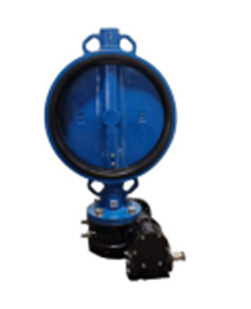12 月 . 03, 2024 15:37 Back to list
wafer style butterfly valve
The Wafer Style Butterfly Valve An Essential Component in Modern Piping Systems
In the realm of industrial piping systems, effectively controlling the flow of liquids and gases is paramount. One of the critical components used for this purpose is the butterfly valve, particularly the wafer style butterfly valve. These devices play an essential role in various industries, including water treatment, oil and gas, and HVAC applications. Their unique design, efficiency, and ease of installation make them a popular choice among engineers and operators alike.
What is a Wafer Style Butterfly Valve?
The wafer style butterfly valve is designed as a circular disc that rotates around a pivot to regulate flow within a pipeline. Unlike traditional valves, which may have a more cumbersome structure, the wafer butterfly valve consists of a thin, compact body that fits between two flanges in a pipeline. This design not only economizes on space but also simplifies the installation process.
The name wafer comes from its flat, disc-like shape, which is sandwiched between the flanges of the piping system. This allows for a tight seal when closed, minimizing leakage and enhancing the overall efficiency of the system. Made typically from materials such as stainless steel, cast iron, or plastic, wafer style butterfly valves can withstand varying pressure conditions and corrosive environments.
Key Features and Benefits
1. Space Efficiency One of the standout features of wafer style butterfly valves is their compact design. They require less space than traditional valves, making them an ideal choice for installations where space is limited. This is particularly advantageous in urban settings or retrofitting projects where maximizing available space is crucial.
2. Lightweight Design These valves are considerably lighter than their globe or gate counterparts, making them easier to transport and install. Their lightweight nature reduces the strain on the supporting structure of the piping system, which can lead to cost savings in construction and material usage.
3. Quick Operation The operation of a butterfly valve is swift, requiring only a quarter turn to open or close fully. This quick response is beneficial in applications where rapid flow control is necessary, as it allows operators to react promptly to changing conditions.
wafer style butterfly valve

4. Versatility Wafer style butterfly valves are suitable for a wide range of applications, capable of handling gases, liquids, and slurries. Their versatility extends across various industries, including chemical processing, food and beverage, and wastewater management.
5. Cost-Effectiveness Due to their simple design and ease of installation, wafer style butterfly valves are often more cost-effective than other valve types. Their reduced weight also means lower shipping costs and easier handling during installation.
Applications in Various Industries
In the water treatment industry, wafer style butterfly valves are commonly used to regulate the flow of treated water and wastewater. They are vital in controlling the distribution of water and ensuring the efficient operation of pumps and other equipment.
In the oil and gas sector, these valves are utilized for controlling flow in pipelines, particularly where space and weight constraints are critical. Their robust design and ability to handle harsh conditions make them suited for this demanding environment.
Furthermore, in the HVAC industry, wafer style butterfly valves regulate airflow in ventilation systems, contributing to energy efficiency and optimal climate control in buildings.
Conclusion
The wafer style butterfly valve is a testament to modern engineering, combining efficiency, versatility, and ease of use. Its unique design ensures secure flow control while minimizing space and installation challenges. As industries evolve and the demand for efficient piping solutions continues to grow, the wafer style butterfly valve will undoubtedly remain an essential component in industrial applications. By understanding and utilizing these valves effectively, engineers can enhance system performance and reliability, paving the way for a more efficient future in fluid control technologies.
Share
-
Understanding the Differences Between Wafer Type Butterfly Valve and Lugged Butterfly ValveNewsOct.25,2024
-
The Efficiency of Wafer Type Butterfly Valve and Lugged Butterfly ValveNewsOct.25,2024
-
The Ultimate Guide to Industrial Swing Check Valve: Performance, Installation, and MaintenanceNewsOct.25,2024
-
Superior Performance with Industrial Swing Check Valve: The Essential Valve for Any SystemNewsOct.25,2024
-
Industrial Swing Check Valve: The Ideal Solution for Flow ControlNewsOct.25,2024
-
You Need to Know About Industrial Swing Check Valve: Functionality, Scope, and PerformanceNewsOct.25,2024